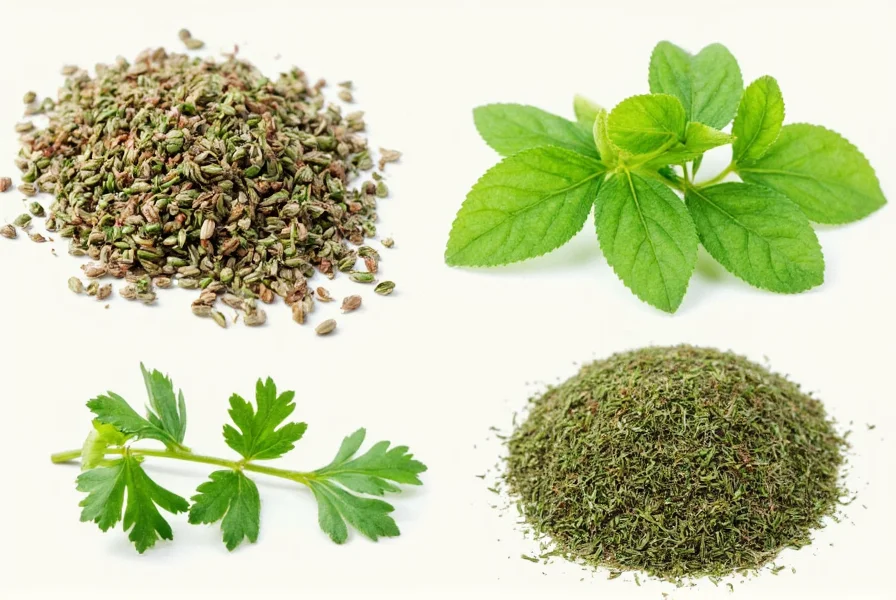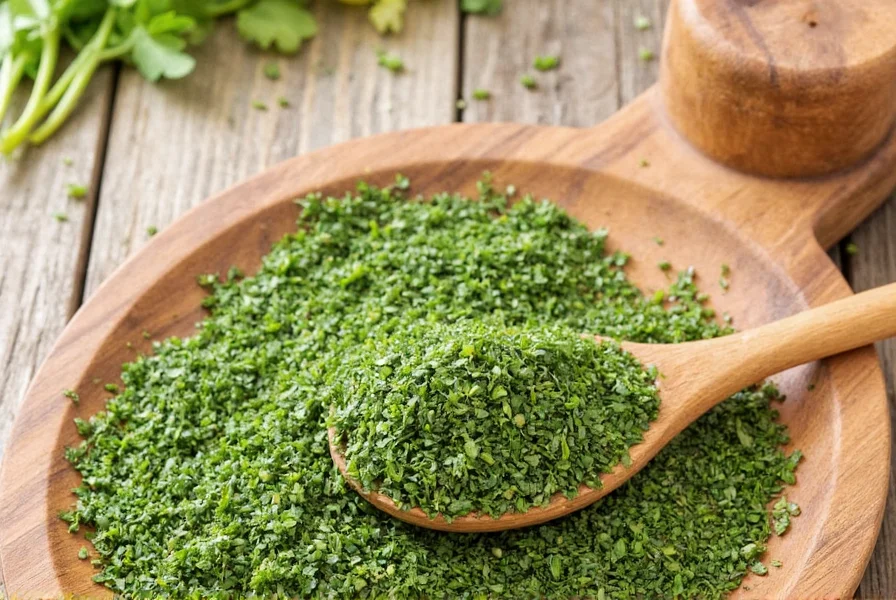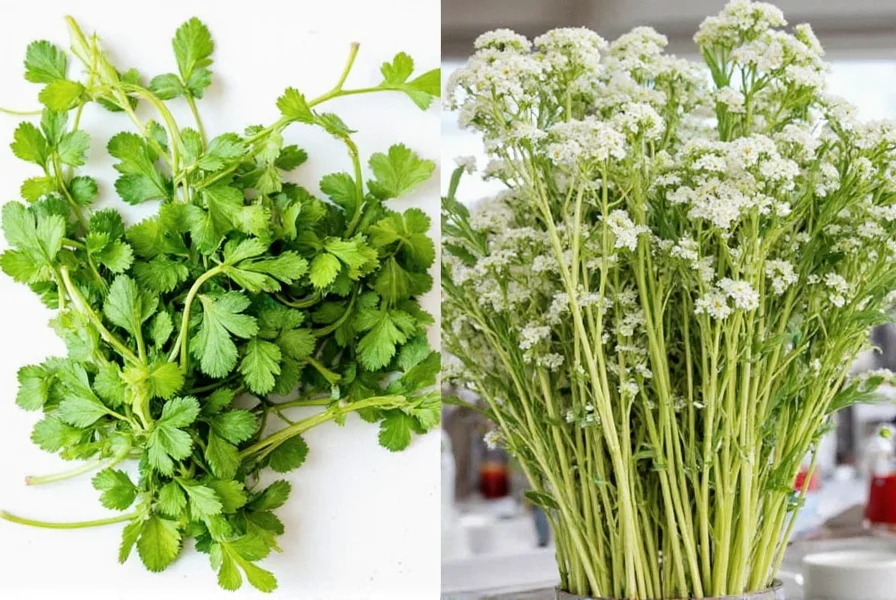The best immediate substitutes for fresh coriander (cilantro) are flat-leaf parsley mixed with a squeeze of lime juice for most recipes, or culantro for dishes requiring stronger flavor. For dried coriander leaf replacement, use 1 teaspoon coriander seeds (ground) plus a pinch of cumin. The ideal substitute depends on your specific recipe and regional cuisine—Mexican dishes often work with parsley and lime, while Indian curries benefit from fresh mint or a combination of herbs.
Running out of fresh coriander mid-recipe creates instant kitchen panic. Whether you're preparing Thai curry, Mexican salsa, or Indian chutney, knowing reliable coriander herb substitutes saves your dish without requiring a grocery run. This guide provides practical, chef-tested alternatives based on flavor chemistry and culinary tradition—not just random suggestions.
Understanding Coriander's Unique Flavor Profile
Before selecting a substitute, understand what makes coriander distinctive. Fresh coriander leaves (often called cilantro in the Americas) offer a bright, citrusy flavor with subtle peppery notes and a hint of earthiness. The compound aldehyde gives it that characteristic taste some describe as "soapy" (a genetic trait affecting 20-30% of people). Dried coriander leaves lose much of this complexity, becoming more earthy and less vibrant.

Top Fresh Coriander Substitutes by Cuisine
Not all substitutes work equally across different dishes. Match your replacement to both the recipe type and cooking method:
| Substitute | Best For | Substitution Ratio | Flavor Adjustment Tips |
|---|---|---|---|
| Flat-leaf parsley + lime juice | Salads, salsas, garnishes | 1:1 volume + 1 tsp lime per ¼ cup | Add pinch of cumin for earthiness |
| Culantro (recao) | Caribbean, Latin American stews | ⅓ to ½ amount of coriander | Use sparingly—it's more potent |
| Fresh mint + basil | Indian raita, Middle Eastern dishes | 2:1 mint:basil to replace coriander | Add lemon zest for brightness |
| Arugula (rocket) | Purees, cooked sauces | ¾ amount of coriander | Blanch first to reduce bitterness |
Dried Coriander Leaf Alternatives
Dried coriander leaves (rarely found outside specialty stores) differ significantly from fresh. When substituting in recipes calling for dried coriander:
- Coriander seeds (ground): Use 1 teaspoon ground seeds per 1 tablespoon dried leaves. Toast seeds first for deeper flavor.
- Paprika + cumin blend: Combine ½ tsp paprika with ¼ tsp cumin for every teaspoon of dried coriander.
- Herbes de Provence: Works surprisingly well in Mediterranean dishes at 1:1 ratio.
Cuisine-Specific Substitution Strategies
Successful coriander herb substitution requires understanding regional cooking principles:
Mexican & Latin American Cuisine
For fresh coriander in salsas and guacamole, combine flat-leaf parsley (75%) with fresh oregano (25%). The oregano provides the missing earthy note while parsley mimics the green freshness. Add lime zest rather than juice to avoid making your salsa watery.
Indian & Southeast Asian Dishes
In curries and chutneys, fresh mint works better than parsley. Use 3 parts mint to 1 part basil for closest approximation. For Thai curry pastes, add ¼ teaspoon lemon grass paste per 2 tablespoons of substitute herbs to replicate coriander's citrus notes.
Middle Eastern Recipes
Tabbouleh and fattoush salads benefit from a mix of parsley and dill (3:1 ratio). The dill's slight sweetness compensates for coriander's missing complexity. Add sumac for the characteristic tang.

When Substitution Fails: Critical Coriander-Dependent Dishes
Some recipes simply won't work with substitutes. Recognize these situations:
- Cilantro-lime rice: The specific aldehyde compounds in coriander react with lime. Substitutes taste "off." Solution: Use parsley with extra lime zest and a drop of lemon extract.
- Authentic chimichurri: Coriander's unique flavor profile is irreplaceable. Consider making parsley-based salsa verde instead.
- Cold raw preparations for coriander-haters: If you dislike coriander's soapy taste, no substitute will work—choose recipes without fresh herbs.
Pro Tips for Effective Substitution
Professional chefs use these techniques when coriander isn't available:
- Layer flavors: Combine two substitutes (e.g., parsley + mint) rather than relying on one.
- Adjust timing: Add substitutes later in cooking than coriander would be added.
- Acid balance: Coriander's citrus notes require acid adjustment—use zest rather than juice when possible.
- Texture matters: For garnishes, choose herbs with similar leaf structure to maintain visual appeal.
Creating Your Own Coriander Substitute Blend
For frequent cooking needs, prepare this versatile mix:
- 2 parts dried parsley
- 1 part dried mint
- ½ part dried lemon balm
- ¼ part ground coriander seed
Store in an airtight container for up to 3 months. Use 1 teaspoon of this blend to replace 1 tablespoon fresh chopped coriander in cooked dishes. For raw applications, reconstitute with a few drops of water first.











 浙公网安备
33010002000092号
浙公网安备
33010002000092号 浙B2-20120091-4
浙B2-20120091-4